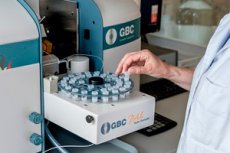Medical expert of the article
New publications
Sex hormone-binding globulin
Last reviewed: 08.07.2025

All iLive content is medically reviewed or fact checked to ensure as much factual accuracy as possible.
We have strict sourcing guidelines and only link to reputable media sites, academic research institutions and, whenever possible, medically peer reviewed studies. Note that the numbers in parentheses ([1], [2], etc.) are clickable links to these studies.
If you feel that any of our content is inaccurate, out-of-date, or otherwise questionable, please select it and press Ctrl + Enter.

Sex hormone binding globulin is a serum glycoprotein that, by binding to sex steroids (testosterone, estradiol, progesterone, etc.), regulates their biological activity.
Globulin is mainly formed in the liver, estrogens stimulate and testosterone suppresses its synthesis formula for calculating the free androgen index ISA*kOT/kGSPG*100 where:
- ISA - free androgen index
- TTC - total testosterone concentration
- cSHBG - sex hormone binding globulin concentration
The free androgen index in young men ranges from 70 to 100%. When the free androgen index falls to 50%, signs of androgen deficiency usually appear. If the SHBG concentration decreases, the ratio of free testosterone to free estradiol increases, although there is an absolute increase in the concentration of both hormones. If the SHBG concentration increases, the ratio of free testosterone to free estradiol decreases. That is, the result of an increase in the SHBG concentration is an increase in the effects of estrogens. With age, there is an increase in the secretion of sex hormone-binding globulin, which can lead to both an increase in the effects of estrogen in men (gynecomastia, redistribution of adipose tissue according to the female type), and maintenance of the level of total testosterone within normal values with a decrease in the level of free testosterone.
| Factors that increase SHBG concentration | Factors that reduce SHBG concentration |
| Estrogens | Androgens |
| Hyperthyroidism | Glucocorticoids |
| Cirrhosis | Insulin |
| Hepatitis | Hypothyroidism |
| Age | Malnutrition |
| Situations associated with protein loss | |
| Obesity | |
| Prolactin | |
| Growth hormone | |
| Nephrotic syndrome | |
| Malabsorption |
In theory, all non-aromatizing AAS lead to a decrease in the concentration of SHBG in the blood plasma. In practice, the most pronounced decrease in SHBG occurs in the case of oral stanozolol. With aromatizing AAS, things are more complicated: they can both decrease and - by converting into estradiol or simply by exhibiting estrogenic activity - increase the level of sex hormone binding globulin.
A very sharp decrease in the concentration of SHBG in the blood plasma can lead to the same negative result as a sharp increase. If in the second case there is a decrease in the level of free testosterone and a change in the testosterone/estradiol ratio in favor of the latter, then in the first case testosterone can be destroyed before it is delivered to muscle cells - sex hormone binding globulin still performs a transport function.


 [
[